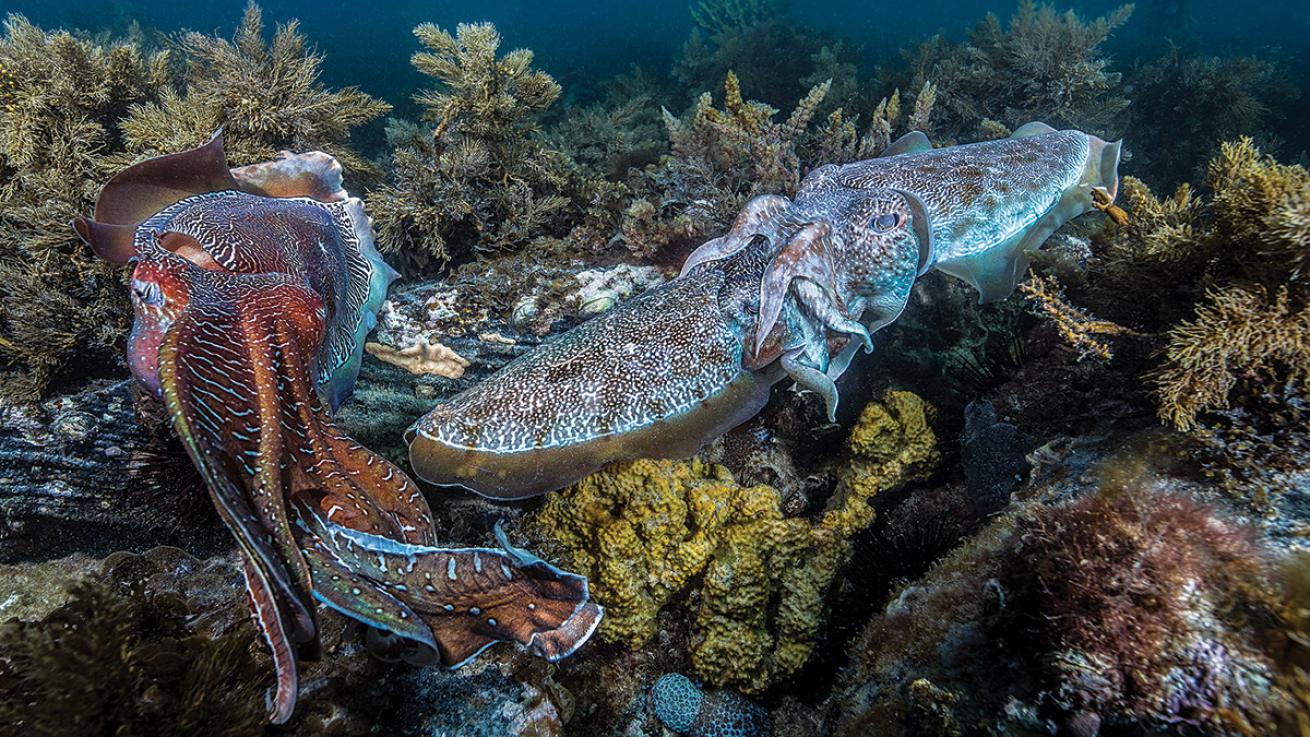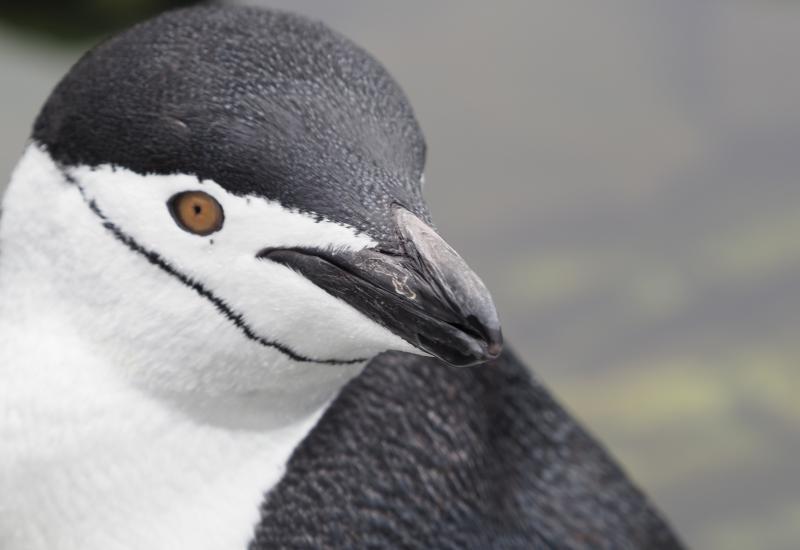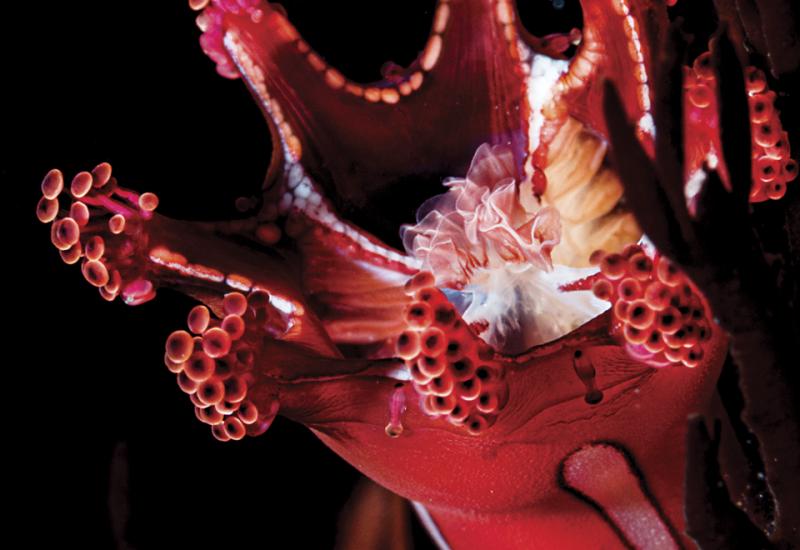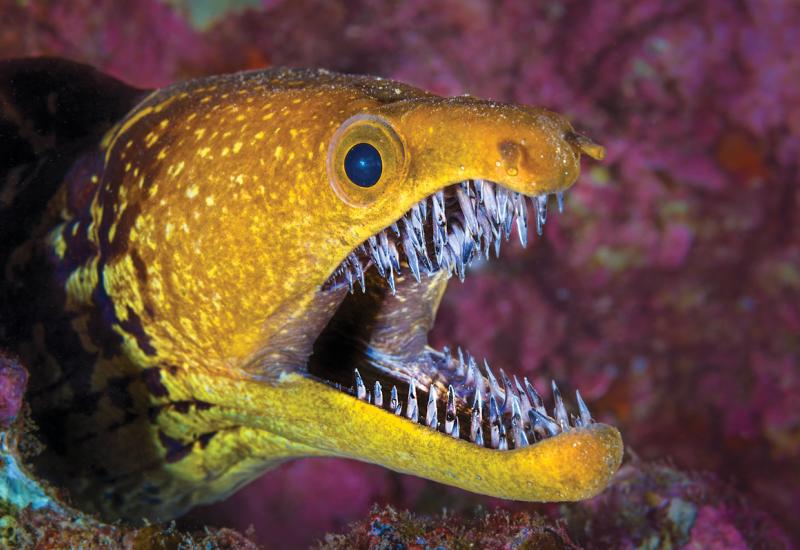Mass Cuttlefish Aggregation a Must-Dive Event in Australia

Liz RogersTwo cuttlefish mate face to face (or tentacle to tentacle), while a male tries to get in on the action.
Finning out slowly over the weedy bottom of South Australia’s Spencer Gulf, I’m surrounded by a spectacle.
Every 2 or 3 feet, in seemingly every direction, a pair of Australia giant cuttlefish (Sepia apama) can be found. Some males aggressively defend their already wooed lovers; competition is fierce in these parts, where males can outnumber females 8 to 1. Others display their macho size and tentacle length to impress the ladies as they investigate under rocks for a good spot to place their fertilized eggs. Some cuttlefish communicate with flashing red, brown, white and blue patterns, while others still maneuver through the weeds as they try to claim a prime spot in this mass gathering.
These cephalopods — close relatives of the octopus and squid — are known to gather in groups of up to a dozen to breed in many areas. But in the shallows of this gulf near Whyalla, this is not the case. Here they gather in the hundreds of thousands for the world’s largest cuttlefish aggregation, from May to August.
Giant cuttlefish are intelligent and soft-bodied with color-changing chromatophores in their skin and three hearts. They grow up to 2 feet long, live for one to two years, and die shortly after breeding season. This extraordinary aggregation was discovered by divers in the 1990s and briefly put at risk by commercial fishing. Protections are now in place, and numbers have rebounded spectacularly over the past three years.
Whyalla is a five-hour drive from the state capital of Adelaide. After dropping into the dive shop to say hello, we head down to the shoreline on a crisp and sunny day. In an hour underwater, I’m able to fully soak in the spectacle and see two pairs that are unconcerned by me pushing a camera within an inch of their tentacle embrace. In fact, scant few of the cuttlefish are worried about divers. They all have much more important things on their minds than us bubble blowers. This makes it easier to line up great photos with afternoon sunbeams in the background.
The location at the top of the gulf is highly protected, but the water is cold at 50 to 55 degrees F. The viz ranges from a few feet to 40 feet, depending on the tide. The cuttlefish are particularly shallow and their colorful displays are fascinating to watch, so the main limit on time in the water is how long it takes for your lips to turn blue with cold.
If you’re visiting South Australia in the Australian winter — perhaps for leafy sea dragons or cage diving with great white sharks — Whyalla’s cuttlefish aggregation is truly a one-of-a-kind experience.










